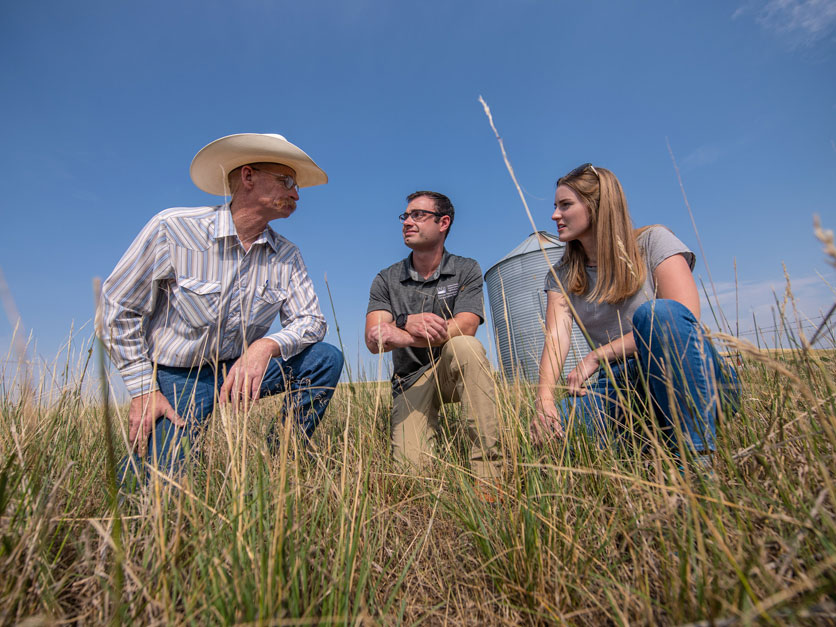Natural Resources Conservation Service offices around the country are gearing up to take in a surge of Inflation Reduction Act funding centered around the conservation programs they operate.
Programs like the Environmental Quality Incentives Program and the Conservation Stewardship Program have long been oversubscribed, something the new funding is expected to address. But the Agriculture Department is under pressure to increase NRCS staffing to handle the surge of spending.
“We’re going to work internally and with the department as it relates to guidance that they will be providing us in the next few days as it relates to how we are going to utilize the funds, what practices to target, et cetera,” Carlos Suarez, California State Conservationist for NRCS, told Agri-Pulse. “But there’s no question, regardless of what that’s going to be, that this is a historic moment in conservation.”
The new funding, according to an NRCS Request for Comment published in the Federal Register in November, will be split between several of the agency’s current programs, with a portion going toward Conservation Technical Assistance. The Environmental Quality Incentives Program (EQIP) will be bolstered by an additional $8.45 billion, while the Conservation Stewardship Program (CSP) will receive $3.25 billion, the Regional Conservation Partnership Program (RCPP) will get $4.95 billion and the Agricultural Conservation Easement Program (ACEP) will be given $1.4 billion.
The agency says approximately $1 billion will go toward conservation technical assistance, while $300 million will be used for greenhouse gas monitoring and $100 million for administrative costs.
Suarez said the focus of the additional funding will be on building climate resilience and mitigating greenhouse gas emissions, though the agency also plans to consider equity when it looks at how to use the funding. He said many of the NRCS’s programs available in California have a backlog, despite the office having around $125 million in project funding available last year.
 Carlos Suarez, California NRCS
Carlos Suarez, California NRCS“There were a lot of contracts that were not filled,” he said. “So this funding will create opportunities to be able to approve further contracts in these future fiscal years.”
California’s NRCS office recently signed an agreement with the California Department of Food and Agriculture, the California Association of Resource Conservation Districts and the regents of the University of California on behalf of the university’s Agriculture and Natural Resources program. The agreement, called the California Conservation Planning Partnership, will allow the institutions to share resources and coordinate their conservation services.
“We’ve always worked with our partners at UCANR, NRCS, and CARCD, but this agreement is a commitment to work together in very specific ways so that we can provide robust, streamlined services and begin to fill gaps and work together to tackle the challenge that is climate change,” said California Department of Food and Agriculture Secretary Karen Ross.
California currently has 345 NRCS employees. Suarez has been trying to increase that to 380; the IRA funding could allow for even more.
“We know that we’re going to have to hire more staff,” Suarez said. “The number of staff is going to depend on how much money we will be receiving, of course, but also understanding that we have attrition in the state, we have a lot of people that have been retiring also.”
USDA’s national office did not make NRCS Chief Terry Crosby or Undersecretary for Farm Production and Conservation Robert Bonnie available for comment on the funding and the agency’s plans for implementing it. But FPAC spokeswoman Amanda Heitkamp told Agri-Pulse in a written statement the agency is seeking public input that it will use to guide the implementation of the funding.
The statement said NRCS wants ideas on “how to maximize benefits for climate mitigation,” as well as feedback on how to best track soil carbon improvements and reductions in nitrogen losses. The agency is also looking at how it can streamline and improve program delivery to increase efficiencies and expand program access for producers, especially those who are underserved.
“In reviewing public input, NRCS will look to identify immediate changes that can be implemented for funding available for fiscal year 2023 as well as additional changes and improvements to support implementation in fiscal year 2024 and beyond,” the statement read.
The agency will be sharing more information on the initial year of funding “early next year,” according to the statement. All IRA funds will need to be spent by Sept. 30, 2031, Suarez said.
Interested in more coverage and insights? Receive a free month of Agri-Pulse!
Nina Sackett Kronberg, a beginning farmer in northwestern Oregon, told NRCS she wanted the agency to use some of the IRA money to increase its staff.
“Right now my NRCS coordinator is covering two counties … by herself,” Kronberg said. “She’s an incredible resource who does a ton of good for the farmers she works with, and I want three more just like her to help connect me with your valuable programs.”
An NRCS rangeland specialist in Nevada, Dusty Jager, said in comments to the agency that NRCS employment efforts have “taken a major hit” over the past three years due to the pandemic and state budget shortages.
Jager, who stressed to Agri-Pulse that the views were his own and not the agency's, said NRCS should use the conservation technical assistance to hire contract specialists to work with contracting, hire technical staff to work directly with each identified technical field and hire project managers to facilitate the conservation efforts.
“NRCS has a wonderful mission which will suffer without the right amount of people,” Jager wrote. “Those people must be tapped and their individual skills applied to the areas that serve the mission of conservation. The increase of funding is exciting and will be challenging at the same time.”
Chad Allison, who coordinates the U.S. Fish and Wildlife Service’s Partners for Fish and Wildlife Coastal Program, said funding levels are too often increased without expansions in staff to administer the funding. He also noted that requirements for USDA staff to manage distribution of the funding may take away from the efficiencies that can be provided by private sector and nongovernment organizations.
The National Grazing Lands Coalition said the agency needs to use at least 50% of the conservation technical assistance funds to increase the agency’s trained, field-level staff to “effectively address the conservation needs of the country.”
For more news, go to www.Agri-Pulse.com.


